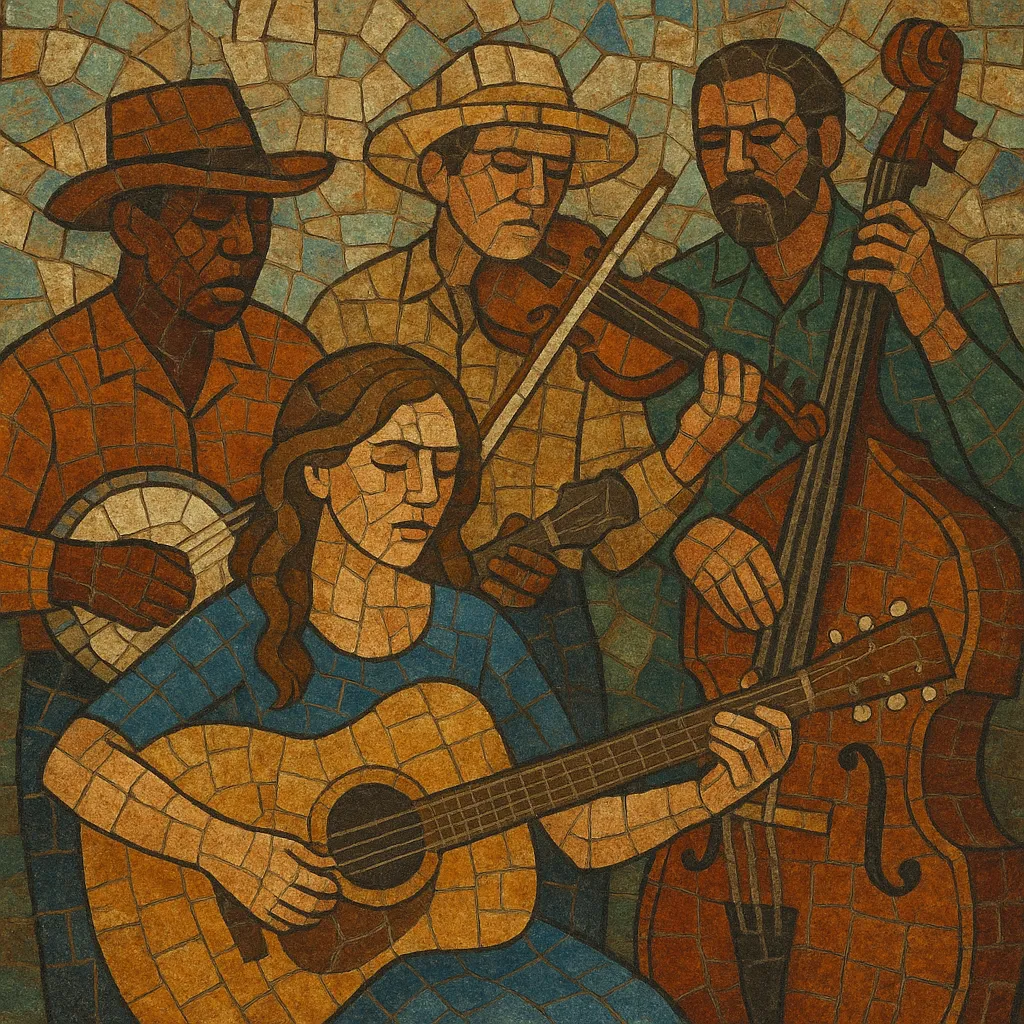
American folk music is a broad, roots-based tradition of songs and tunes that developed in the United States from the blending of Anglo‑Celtic ballads and fiddle tunes with African American spirituals, work songs, hollers, and other community musics. It is largely acoustic, orally transmitted, and centered on storytelling about everyday life, labor, love, migration, justice, and faith.
Typical sounds include voice accompanied by guitar, banjo, fiddle, mandolin, harmonica, dulcimer, and upright bass. Melodies often draw on modal (Dorian, Mixolydian) as well as major scales, with simple, singable refrains and strophic forms. Beyond front‑porch playing and dance tunes, American folk became a vehicle for social commentary, union organizing, and civil rights, especially during the 1930s–1960s folk revival.
American folk music grew from the convergence of British and Irish ballads and fiddle traditions with African American spirituals, field hollers, work songs, and hymnody. In rural Appalachia, the Ozarks, the South, and the Plains, families and communities preserved and adapted songs about frontier life, railroads, mining, love, and loss. Instruments like the fiddle (European) and the banjo (of West African origin) became central to dance music and ballad accompaniment.
In the early 1900s, song collectors and scholars recorded and published traditional repertoires. John and Alan Lomax documented vast archives of ballads, cowboy songs, spirituals, and prison work songs. During the Great Depression, figures such as The Carter Family, Woody Guthrie, and Lead Belly brought traditional songs and new compositions to radio and records. Folk music intertwined with labor and populist movements, giving voice to economic hardship and solidarity.
Postwar interest surged via urban coffeehouses, hootenannies, and college campuses. Pete Seeger, The Weavers, Odetta, Joan Baez, and Bob Dylan linked traditional forms to contemporary issues—civil rights, peace, and social justice. The revival broadened the audience, sparked festivals (e.g., Newport Folk), and catalyzed hybrid styles; Dylan’s 1965 electric turn helped launch folk rock and reshaped popular music.
From the 1970s onward, American folk fed into singer‑songwriter traditions, country and roots rock, and later indie and Americana scenes. Artists such as Doc Watson bridged old‑time technique and contemporary performance. Periodic revivals—freak folk, indie folk, and broader Americana—have kept the form vibrant, while community song circles, sacred harp singings, and regional styles (Appalachian, Cajun, cowboy song) continue to sustain its grassroots character.
American folk music remains a living, participatory tradition: a template for storytelling, protest, and communal singing that continues to shape popular genres and cultural memory.

